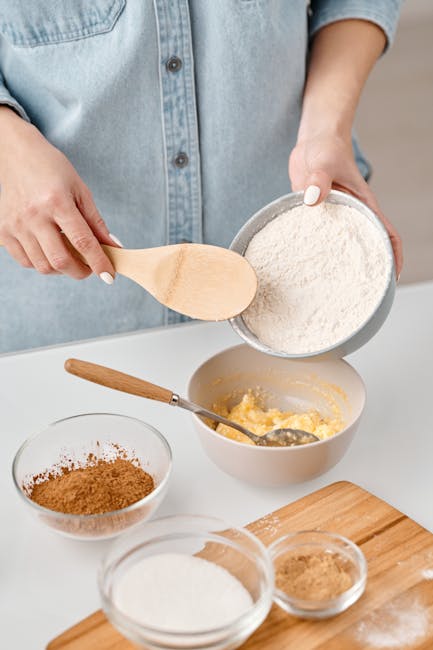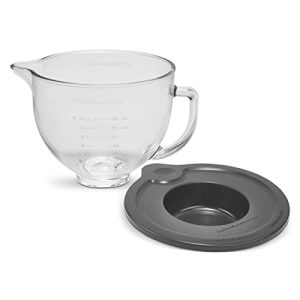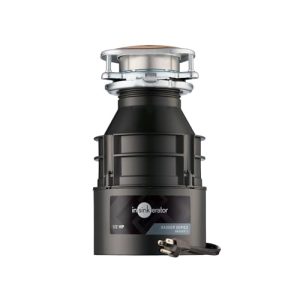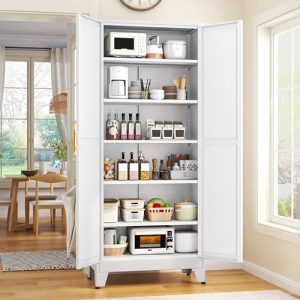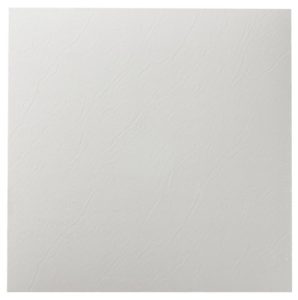Are you ready to make your kitchen more efficient with a new Kitchen Aid dishwasher? Knowing how to plumb it in correctly is key to saving time and avoiding costly mistakes.
This guide will walk you through each step, making the process simple and stress-free. By the end, you’ll have your dishwasher running smoothly, so you can enjoy sparkling clean dishes without the hassle. Keep reading—you’re closer than you think to a perfectly installed dishwasher!
Tools And Materials Needed
Gathering the right tools and materials is key to installing your Kitchen Aid dishwasher smoothly. Having everything at hand saves time and avoids frustration during plumbing. The list includes items for water connection, drain setup, and electrical safety.
Using quality tools helps prevent leaks and damage. The materials should fit your dishwasher model and home plumbing system. Prepare a clean workspace to keep parts organized and accessible.
Basic Plumbing Tools
- Adjustable wrench
- Pipe wrench
- Phillips and flathead screwdrivers
- Teflon tape (plumber’s tape)
- Tube cutter or hacksaw (for copper or plastic pipes)
- Plumber’s putty or silicone sealant
- Bucket and towels (for water spills)
Materials For Water Supply
- Dishwasher supply line (usually braided stainless steel)
- Shut-off valve (if not already installed)
- Compression fittings or push-to-connect fittings
- Water inlet valve (if replacement is needed)
Drainage Components
- Drain hose (usually comes with the dishwasher)
- Hose clamps
- Air gap (if local code requires)
- Sink drain adapter or garbage disposal connection kit
Electrical Supplies
- Power cord (usually included with dishwasher)
- Wire nuts
- Electrical tape
- Voltage tester (to check power supply)
Prepare The Installation Area
Preparing the installation area for your Kitchen Aid dishwasher is essential for a smooth plumbing process. Clear the space under your kitchen counter where the dishwasher will fit. Make sure there is enough room to access water and drain connections easily.
Check the cabinet opening size to match your dishwasher’s dimensions. Remove any shelves or obstructions that block access to plumbing points. Ensure the floor under the dishwasher is clean and dry to avoid slipping or water damage.
Check Water Supply Line Location
Locate the cold water supply line near the dishwasher space. Confirm it has a shut-off valve for easy control. The water line should be close enough to connect without stretching or bending.
Inspect Drain Connection Point
Find the drain pipe or garbage disposal near the dishwasher spot. The drain must be within reach of the dishwasher’s drain hose. Check for any leaks or clogs before installation.
Ensure Proper Electrical Outlet Access
Verify there is an electrical outlet near the dishwasher area. The outlet should be grounded and meet local electrical codes. Avoid using extension cords for safety reasons.
Gather Necessary Tools And Materials
- Adjustable wrench
- Bucket to catch water
- Teflon tape for sealing connections
- Dishwasher installation kit (hoses, clamps)
- Flashlight for better visibility
Turn Off Water And Power
Before you start plumbing your Kitchen Aid dishwasher, it’s essential to ensure safety by turning off both the water supply and power. This step prevents any unexpected leaks or electrical hazards that could cause damage or injury. Taking these precautions might seem simple, but skipping them can lead to costly repairs and a stressful experience.
Turning Off The Water Supply
Locate the water shut-off valve under your kitchen sink. It usually looks like a small knob or lever connected to a pipe.
Turn the valve clockwise until it stops. This action cuts off the water flow to your dishwasher and sink.
If you don’t find a local valve, you may need to turn off the main water supply to your home. Have a towel or bucket ready just in case a small amount of water drips out when disconnecting hoses.
Switching Off The Power Safely
Dishwashers run on electricity, so turning off power is crucial. Find your home’s circuit breaker panel.
Flip the switch labeled for the dishwasher or kitchen area to the “off” position. If you’re unsure, it’s safer to turn off the main breaker.
Double-check that the power is off by pressing the dishwasher’s start button. It should not light up or make any noise.
Why Skipping This Step Can Cost You More
Imagine starting your plumbing work without cutting power or water. Even a small water leak combined with electricity can create a dangerous shock risk.
Water damage can ruin your cabinets and flooring, leading to expensive repairs. Electrical shorts might damage your dishwasher or even cause a fire.
Are you confident your workspace is safe? Taking a few minutes to switch off water and power can save you from headaches later.
Connect Water Supply Line
Connect the water supply line to your Kitchen Aid dishwasher for smooth operation. Ensure the line is securely attached to prevent leaks. Use a wrench to tighten connections gently.
Connecting the water supply line to your KitchenAid dishwasher is a crucial step in ensuring it functions efficiently. This task might seem daunting, but with a few careful steps, you can tackle it like a pro. Properly connecting the water supply ensures your dishwasher receives the right amount of water needed for spotless dishes.Locate Water Inlet Valve
First, identify the water inlet valve on your dishwasher. This valve is typically located at the bottom of the appliance. It’s where the water supply line will be connected. Ensure the dishwasher is unplugged and the water supply is turned off. Safety should always be your top priority. You don’t want any unexpected leaks or accidents during the process. Take a moment to examine the valve for any signs of wear or damage. If something doesn’t look right, consider consulting a professional. It’s better to be safe than sorry, especially when water is involved.Attach Water Line To Valve
Once you’ve located the valve, it’s time to attach the water line. Use a flexible, stainless steel water line for durability and ease of installation. Carefully connect the water line to the inlet valve. Ensure that the connection is snug but not overly tight. Over-tightening can damage the threads or cause leaks. Use an adjustable wrench to secure the connection, but avoid using excessive force. Check the connection by turning on the water supply slightly. Look for any drips or leaks, and adjust as necessary. This step might seem straightforward, but attention to detail is key. Remember, a proper connection ensures your dishwasher performs optimally, saving you time and effort in the long run. Are you ready to enjoy the convenience of a perfectly plumbed KitchenAid dishwasher?Install Drain Hose
Installing the drain hose is a key step to ensure your Kitchen Aid dishwasher drains properly. A well-installed hose prevents leaks and keeps your kitchen floor dry. Let’s focus on how to attach the hose securely and connect it to your drain pipe without hassle.
Secure Hose To Dishwasher
First, locate the drain outlet on the dishwasher’s back or side. Slide the drain hose onto this outlet firmly. Make sure the connection is tight to avoid water leaks during operation.
Use a clamp or zip tie to fasten the hose in place. This keeps it from slipping off when water flows through. Check the hose isn’t kinked or bent sharply, as this can block water flow and cause backups.
Connect Hose To Drain Pipe
Next, find the drain pipe under your sink or attached to your garbage disposal. Attach the other end of the drain hose to this pipe or the designated dishwasher inlet.
Secure it with a hose clamp or screw clamp to prevent water from escaping. Double-check the hose is routed so water flows downhill without loops that could trap debris.
Have you noticed your sink drains slowly after installing a dishwasher? It could be a sign the hose isn’t installed correctly. Taking time now to secure the hose properly saves you from potential water damage and clogs later on.
Connect Electrical Wiring
Connecting the electrical wiring for your Kitchen Aid dishwasher is a crucial step in the installation process. It ensures your appliance receives power safely and operates correctly. If you overlook this part or handle it incorrectly, you risk damaging the dishwasher or creating a safety hazard.
Turn Off The Power Supply
Before you touch any wires, make sure the power is completely off. Locate your home’s circuit breaker and switch off the breaker connected to the kitchen area. Double-check by using a voltage tester on the dishwasher’s wiring to confirm no electricity is flowing.
Access The Dishwasher’s Junction Box
Remove the access panel at the bottom front of your dishwasher. Inside, you will find the junction box where all the electrical connections are made. It’s usually secured with screws, so keep a screwdriver handy.
Match The Wire Colors Correctly
Kitchen Aid dishwashers generally have three wires: black (hot), white (neutral), and green or bare copper (ground). Match these with the corresponding wires in your home’s electrical supply. Proper matching is key to avoiding electrical shorts or shocks.
Secure The Wire Connections
Use wire nuts to twist the matching wires together tightly. Then, wrap them with electrical tape for extra security. Loose connections can cause the dishwasher to malfunction or even trip your circuit breaker.
Attach The Ground Wire Properly
The ground wire is your safety net. Attach the green or bare copper wire to the green grounding screw inside the junction box. This helps prevent electrical shocks in case of a fault.
Close The Junction Box And Restore Power
After securing all connections, carefully tuck the wires back into the junction box. Replace the access panel and screw it in place. Finally, turn the circuit breaker back on and test your dishwasher to confirm it’s working.
Test Dishwasher For Leaks And Operation
Testing your Kitchen Aid dishwasher for leaks and proper operation is a crucial step after plumbing it in. It ensures everything runs smoothly and prevents water damage in your kitchen. Taking the time to carefully check for leaks and verify the dishwasher’s functions can save you from costly repairs down the road.
Check All Connections For Water Leaks
Start by turning on the water supply and visually inspecting all hose connections. Look closely where the dishwasher hose meets the water source and drain. Even a tiny drip can cause problems, so don’t rush this step.
Use a dry paper towel to wipe around each connection, then run the dishwasher briefly. If the paper towel gets wet, you have a leak to fix. Tighten connections gently but firmly to avoid damaging fittings.
Run A Full Wash Cycle
Next, run a complete wash cycle to test the dishwasher’s operation. Pay attention to sounds—unusual noises could signal an issue with the motor or spray arms. Also, check the dishwasher door seal during the cycle to catch any leaks there.
At the end of the cycle, open the dishwasher and inspect the bottom for standing water. If water pools, it might indicate a drainage problem that needs addressing before regular use.
Verify Proper Drainage And Water Flow
Make sure the dishwasher drains water fully at the end of each cycle. Poor drainage can cause odors and affect cleaning performance. Observe the drain hose to confirm water flows smoothly without backups.
If you notice water left inside or slow draining, check the drain hose for kinks or blockages. Clearing the hose or adjusting its position can often fix drainage issues quickly.
Test The Dishwasher’s Spray Arms
Spray arms are essential for cleaning dishes thoroughly. During the cycle, watch if the spray arms spin freely and spray water evenly. If they don’t move or spray properly, debris or installation problems might be the cause.
Remove and clean the spray arms if necessary, then reinstall them securely. This simple check can dramatically improve your dishwasher’s cleaning power.
Troubleshooting Common Issues
Troubleshooting common issues in your Kitchen Aid dishwasher plumbing can save you time and money. Many problems arise from simple oversights or minor installation errors. Understanding these issues helps you fix them quickly and get your dishwasher running smoothly again.
Checking For Water Supply Problems
If your dishwasher isn’t filling with water, start by inspecting the water supply line. A kinked or clogged hose can restrict water flow. Make sure the valve controlling the water supply is fully open.
Have you ever noticed the dishwasher not starting or stopping mid-cycle? This often links back to water supply interruptions. Clear any blockages and replace damaged hoses if needed.
Dealing With Drainage Issues
Water standing inside the dishwasher after a cycle signals a drainage problem. Check the drain hose for clogs or improper positioning. The hose should loop up before connecting to the drain to prevent backflow.
Sometimes, food particles or debris clog the dishwasher’s filter or drain pump. Cleaning these parts regularly avoids buildup that can cause drainage failure.
Fixing Leaks And Water Damage
Leaks under your dishwasher can stem from loose connections or damaged seals. Inspect the water inlet valve, door gasket, and hoses for any signs of wear or cracks.
If you spot water pooling, tighten all fittings and replace worn seals immediately. Ignoring leaks can lead to costly water damage under your kitchen floor.
Ensuring Proper Electrical Connections
Your dishwasher won’t run without a solid electrical connection. Check that the power cord is securely plugged in or that the hardwired connections are intact.
A tripped circuit breaker or blown fuse can also stop your dishwasher. Reset breakers and replace fuses if necessary before assuming a mechanical failure.
When To Call A Professional
Some plumbing problems require expert knowledge and tools. If you’ve tried these fixes and the dishwasher still won’t work, it’s time to contact a professional.
Persistent leaks, faulty wiring, or damaged internal components should be handled by a licensed plumber or appliance technician. They can ensure safety and proper repair.
Frequently Asked Questions
How Do I Connect A Kitchen Aid Dishwasher To Plumbing?
To connect, turn off the water supply first. Attach the dishwasher’s water inlet hose to the hot water valve. Secure all connections tightly to avoid leaks. Finally, connect the drain hose to the sink drain or garbage disposal.
What Tools Are Needed For Kitchen Aid Dishwasher Plumbing?
You need an adjustable wrench, screwdriver, pliers, and plumber’s tape. These tools help secure water and drain connections properly. Having a bucket to catch water spills is also useful.
Can I Use Cold Water For My Kitchen Aid Dishwasher?
No, it’s best to use hot water for effective cleaning. Hot water helps dissolve detergent and removes grease efficiently. Ensure the water temperature is between 120°F and 140°F for optimal results.
How Do I Prevent Leaks When Plumbing My Dishwasher?
Use plumber’s tape on all threaded connections. Tighten hoses firmly but avoid overtightening. Check for leaks by running a short cycle after installation. Replace any worn-out washers or hoses immediately.
Conclusion
Plumbing a Kitchen Aid dishwasher can be simple with clear steps. Use the right tools and follow each instruction carefully. Check all connections to avoid leaks and ensure proper water flow. Take your time to secure hoses and tighten fittings well.
Testing the dishwasher before full use helps catch issues early. This saves time and prevents damage later. A well-plumbed dishwasher works efficiently and lasts longer. Now, you can enjoy clean dishes without worry.

Sophie Hartwell is the founder of KitchenQuik.com, where she shares kitchen tips, smart cooking hacks, and the best product picks to make everyday cooking easier and more enjoyable.
